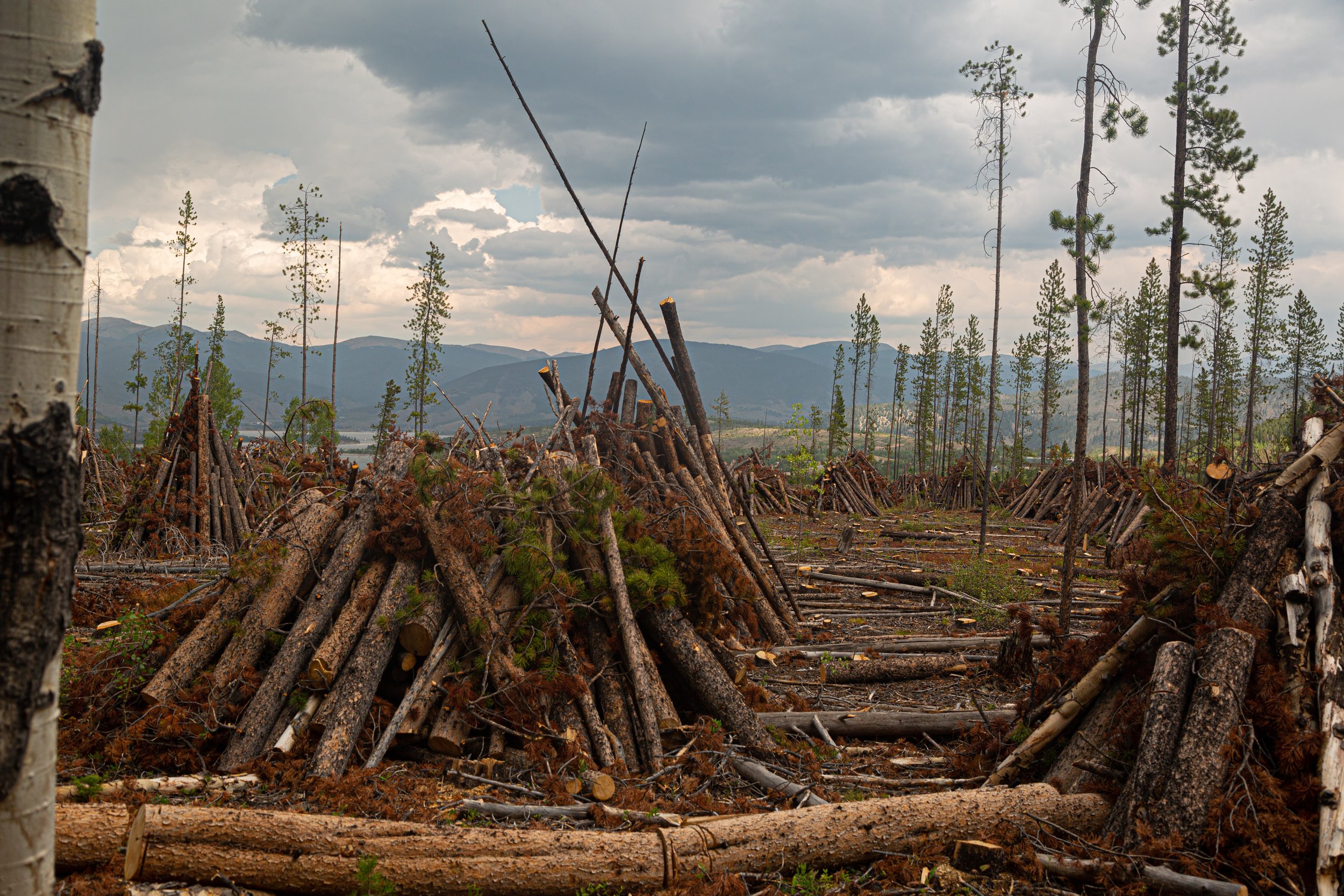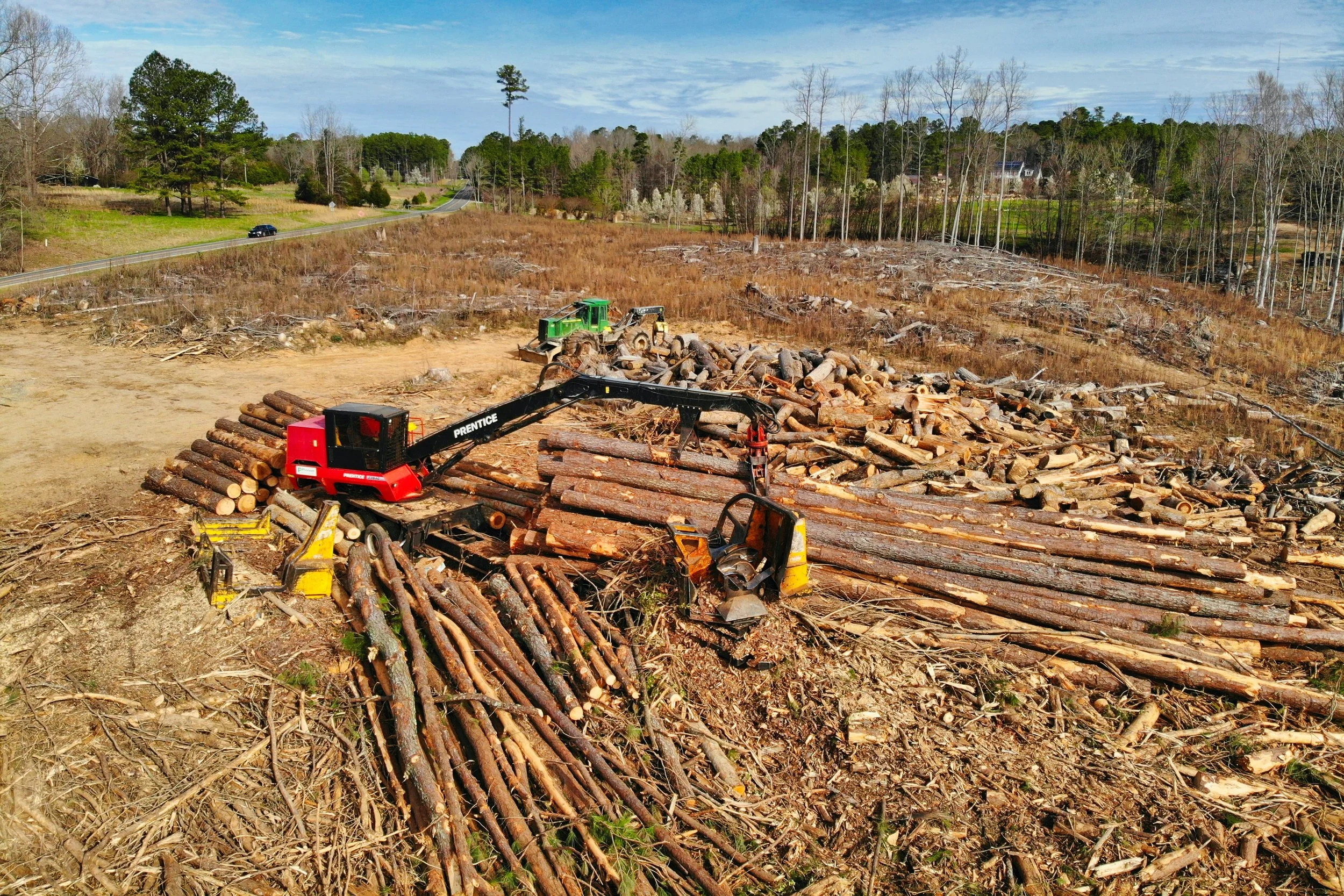WHAT IS LAND CLEARING AND WHEN IS IT NECESSARY?
LAND CLEARING
Land clearing is the process of removing trees, shrubs, and other vegetation from a piece of land. This is typically done in order to use the land for a specific purpose, such as farming, building development, or land management.
Land clearing can be done using a variety of methods, including manual labor, bulldozing, and chemical herbicides. It is a controversial practice, as it can have negative effects on the environment and wildlife.Land clearing is a common practice in many parts of the world, and is often necessary for agriculture, urban development, and other human activities. However, it can have negative consequences for the environment, including soil erosion, habitat loss, and increased greenhouse gas emissions.In many cases, land is cleared by cutting down trees and other vegetation using chainsaws or other mechanical equipment. This method is quick and effective, but can cause damage to the soil and remaining vegetation. It can also result in the loss of valuable habitats for wildlife, as well as increased erosion and sedimentation in nearby waterways.Another method of land clearing is the use of chemical herbicides. These chemicals are applied to the land to kill existing vegetation, and can be effective in removing even dense forests. However, herbicides can have negative impacts on soil health and water quality, and can be harmful to non-target plants and animals.When is land clearing necessary?
Land clearing is the process of removing trees, shrubs, and other vegetation from a piece of land. It is often necessary in order to make the land suitable for development or agricultural use. However, there are also instances where land clearing is not necessary, and can even be detrimental to the environment.
One reason why land clearing may be necessary is to make room for new construction. If a developer wants to build a new housing development or commercial property, they will often need to clear the land in order to create space for the buildings and infrastructure. This can be especially important in areas where there is limited space available for development.
Another reason why land clearing may be necessary is for agricultural purposes. Farmers may need to clear land in order to plant crops, or to create pastures for livestock. In some cases, farmers may also need to clear land in order to remove invasive species or to improve the overall health of the land.
However, land clearing can also have negative effects on the environment. Removing trees and other vegetation can lead to soil erosion, which can cause water pollution and damage to nearby ecosystems. Additionally, land clearing can also contribute to climate change by releasing carbon stored in vegetation into the atmosphere.
Therefore, it is important to carefully consider whether or not land clearing is necessary in a given situation. In some cases, alternative development or agricultural practices may be able to achieve the same goals without causing harm to the environment. It is also important to implement proper land management techniques, such as reforestation and erosion control measures, in order to minimize the negative effects of land clearing.
Overall, land clearing can be necessary in some situations, but it is important to carefully consider the potential environmental impacts before proceeding. By taking a responsible approach to land clearing, we can help to protect our environment and preserve natural resources for future generations.
What are the different methods of land clearing?
Land clearing refers to the process of removing trees, plants, and other vegetation from an area of land. This is often done to prepare the land for farming, building, or other uses. There are several different methods of land clearing, each with their own advantages and disadvantages.
One common method of land clearing is manual labor. This involves using hand tools such as axes and saws to cut down trees and remove other vegetation. This method is relatively inexpensive, but it can be time-consuming and labor-intensive. Additionally, it may not be effective for removing larger trees or dealing with dense vegetation.
Another method of land clearing is the use of machinery, such as bulldozers and excavators. This method is faster and more effective than manual labor, but it can be expensive and can cause significant damage to the land. It is also not suitable for use in areas with steep slopes or fragile ecosystems.
Herbicides, or chemicals that kill plants, are another option for land clearing. This method is relatively inexpensive and can be effective in killing a wide range of plants. However, it can also be harmful to the environment and may affect other non-target plants and animals. Additionally, herbicides may not be effective on certain types of vegetation, such as deep-rooted plants or invasive species.
Another method of land clearing is controlled burning. This involves setting fire to the vegetation, which can be effective in removing trees and other plants. However, it can also be dangerous and can cause significant damage to the land if not done properly. Additionally, controlled burning can produce smoke and other pollutants that can be harmful to the environment and to human health.
There are several different methods of land clearing, each with their own advantages and disadvantages. Choosing the right method will depend on the specific situation, including the type and density of vegetation, the size of the area to be cleared, and the intended use of the land. It is important to consider the potential impacts of each method on the environment and on human health.
Do you need a clearance for land clearing?
Depending on the location and the type of vegetation being removed, you may need to obtain a permit or clearance before starting the land clearing process. This is because land clearing can have environmental impacts, such as soil erosion and loss of habitat for wildlife.
It is important to check with your local government or land management agency to determine if you need a permit or clearance for land clearing. The requirements for land clearing can vary depending on the location and the scope of the project. In some cases, you may be able to clear a small area of land without a permit, while larger projects may require a more thorough review and approval process.
One of the main reasons why land clearing requires a permit or clearance is to ensure that the project is carried out in an environmentally responsible manner. This can include measures to prevent soil erosion, protect wildlife habitat, and prevent the spread of invasive species. In some cases, land clearing may also need to be coordinated with other land use activities, such as development or farming.
To obtain a permit or clearance for land clearing, you will typically need to submit an application to the appropriate government agency. This application will need to include detailed information about the proposed project, including the location, the size of the area to be cleared, and the types of vegetation that will be removed. You may also need to provide a plan for how the land will be used after the clearing is complete.
In some cases, you may need to provide additional information or documentation to support your application for land clearing. For example, you may need to provide a survey or map of the property, as well as any relevant environmental assessments or studies. You may also need to consult with other agencies or stakeholders, such as local conservation groups or Native American tribes, to ensure that your land clearing project does not have negative impacts on the environment or local communities.
Once your application has been reviewed and approved, you will typically be issued a permit or clearance that allows you to proceed with the land clearing project. This permit or clearance may include specific conditions or requirements that you must follow, such as limiting the hours of operation or using certain types of equipment. It is important to carefully review and understand these conditions, as failure to comply with them can result in fines or other penalties.
In conclusion, land clearing often requires a permit or clearance to ensure that the project is carried out in an environmentally responsible manner. This process can involve submitting an application and providing detailed information about the project, as well as consulting with other agencies and stakeholders. By obtaining the necessary permits or clearances, you can help protect the environment and ensure that your land clearing project is successful.
Featured Blogs
SIKES CONCRETE INC.
8030 FL-77, Southport, FL 32409
850-265-4564






